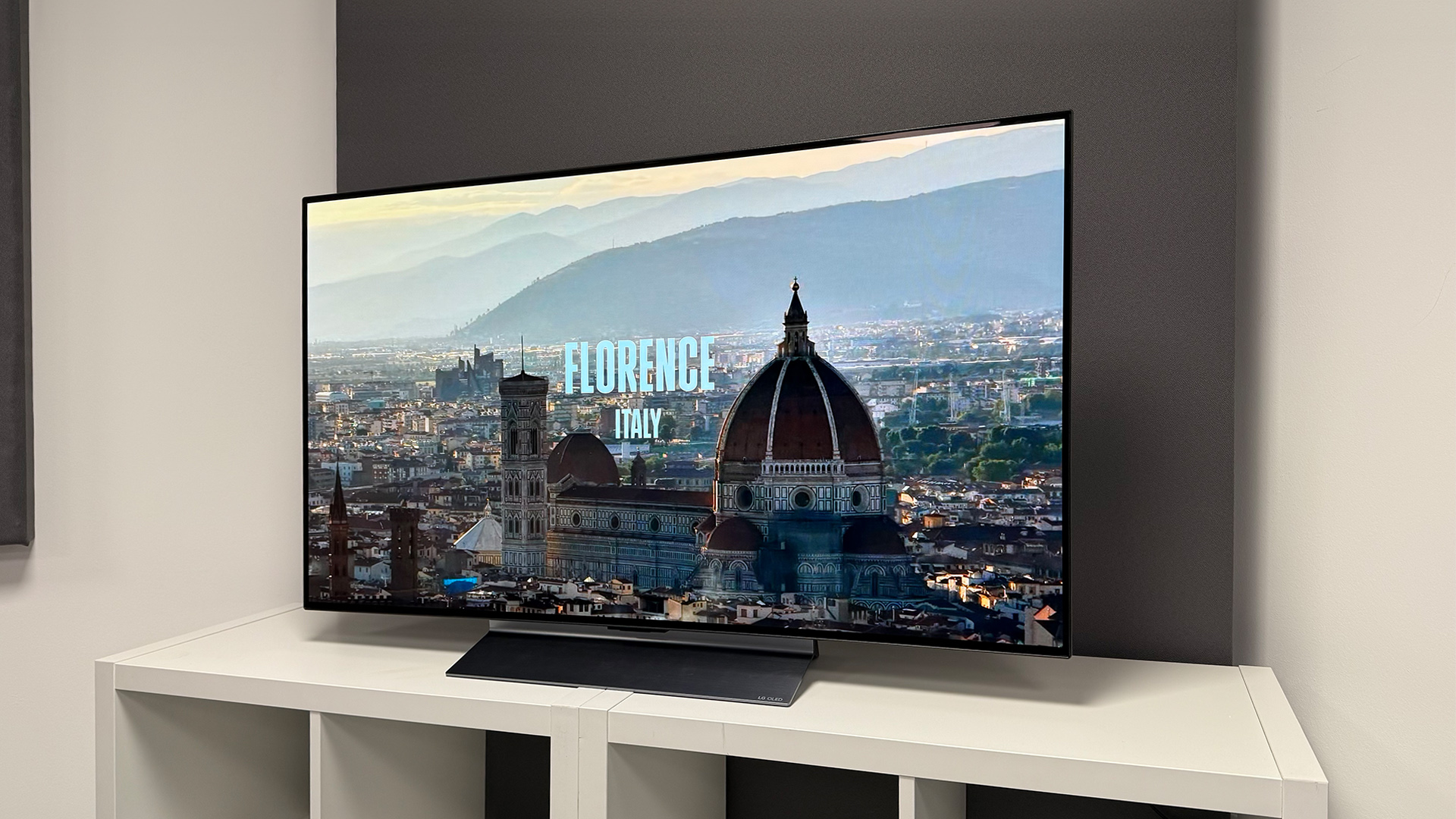What Hi-Fi? Verdict
A brilliant small-ish TV that’s a solid option for anyone yet to make the jump to OLED
Pros
- +
Bright picture
- +
Flawless gaming specifications
- +
Excellent app support
Cons
- -
Not much of an upgrade on the C4
- -
Some picture inconsistencies
- -
Below average audio
Why you can trust What Hi-Fi?
The 48-inch LG C5 is the second smallest option in the company’s current step-down line of OLED TVs – which automatically makes it an interesting beast.
Flagship OLED TVs aren't really produced in sub-55-inch sizes. Sure, there's the new 48-inch G5, but that lacks the Primary RGB panel of its larger siblings, so it doesn't really count as a fully fledged flagship.
All of which is to say that while the C5 range is a step-down line, the 48-inch C5 is pretty much as premium as TVs this size get.
It’s also coming off the back of a hot streak for LG, with two generations of its predecessors not only earning top marks from our reviewers, but then going on to win What Hi-Fi? Awards.
Has lightning struck a third time with LG’s 48-inch C5 OLED TV? Here’s what we found after thoroughly putting it through its paces in our dedicated test rooms.
Price
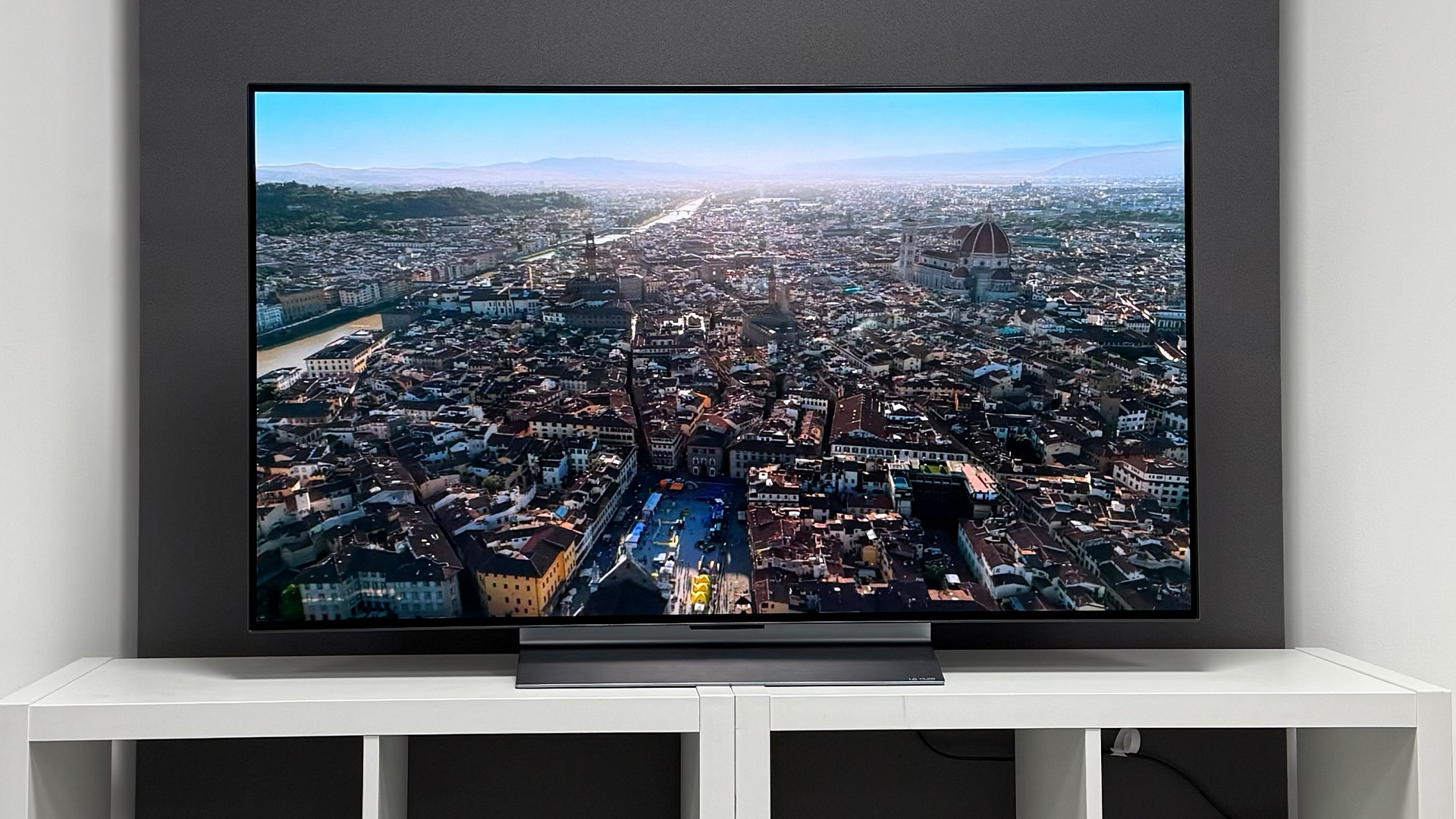
The 48-inch LG C5 launched at a price of £1500 / $1599 / AU$2499. We’ve recently seen some early discounts that knock the odd hundred off, but you're currently still looking at paying close to full price.
The 48-inch C5's main rival is the identically sized Samsung S90F, which uses the same OLED panel technology. Unsurprisingly, the 48-inch Samsung S90F is priced at launch very similarly to the C5, at £1499 / $1500 / AU$2499.
The latest hi-fi, home cinema and tech news, reviews, buying advice and deals, direct to your inbox.
You can also get the C5 in 42-, 55-, 65-, 77- and 83-inch sizes. The 42-inch LG C5 launched for £1400 / $1399 / AU$2199. Prices then rise in line with the TV’s size, capping at £5999 / $5399 / AU$7999 for the largest 83-inch option.
Build
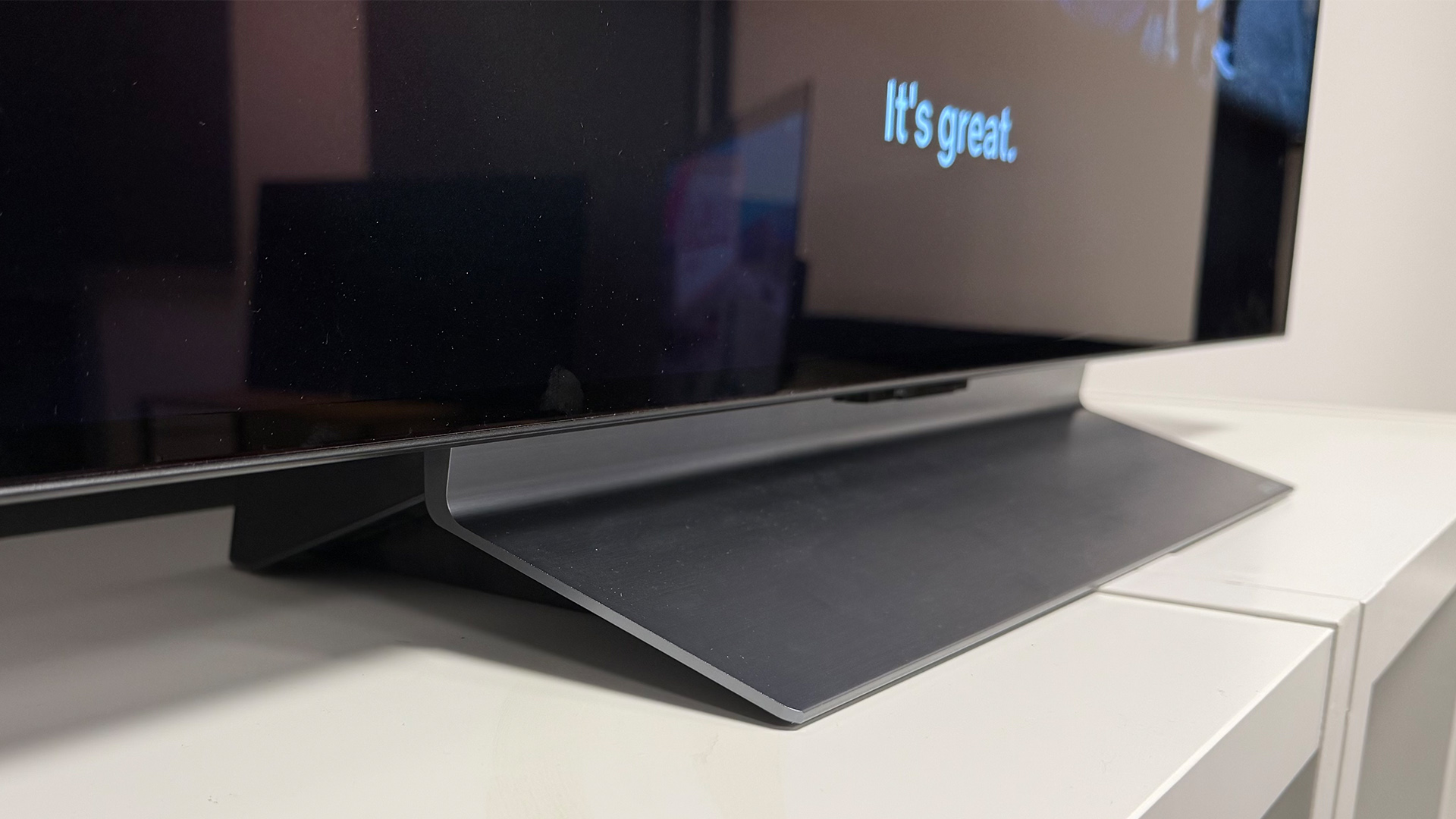
LG hasn’t rethought the wheel with the C5’s design. In fact, it’s so unchanged that if you put it next to 2022's LG C2, let alone last year's C4, you would probably struggle to spot the difference.
Unlike the 42-inch model, the 48-inch C5 has the same central stand design as the 55-inch version we reviewed earlier this year, which is quick and easy to assemble. Just plonk the stand on the TV's back and secure it with the included screws. Once done, it provides a stable base that will fit on most regular-sized TV cabinets without issue.
Sadly, the stand doesn’t have a swivel mechanism, though this is less of an issue here as the set’s ports are mostly housed on its side rather than back, making them fairly easy to access.
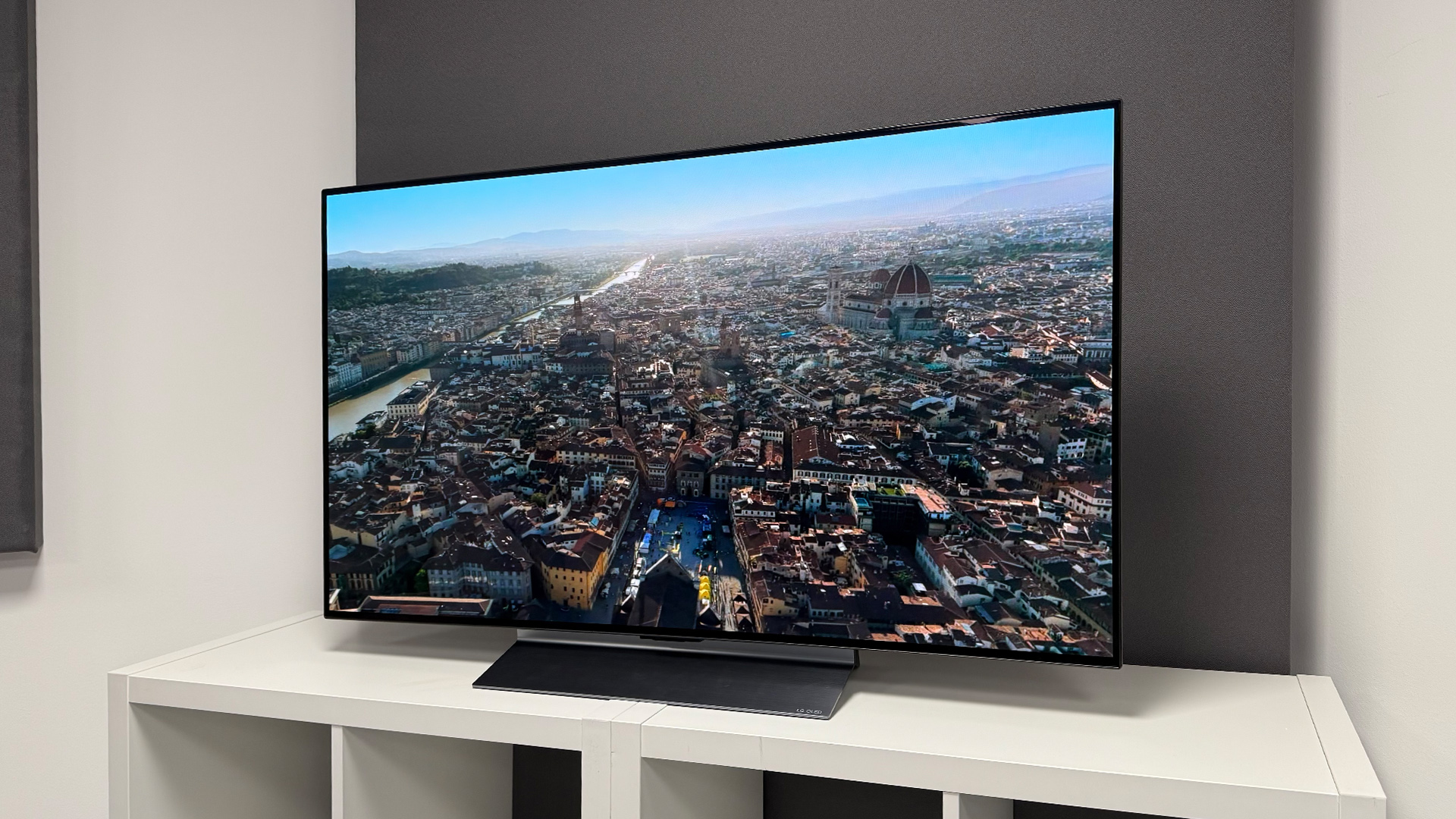
Screen size 48 inches (also available in 42, 55, 65, 77 and 83 inches)
Type OLED
Backlight N/A
Resolution 4K
HDR formats HLG, HDR10, Dolby Vision
Operating system webOS 25
HDMI inputs x4 (4 x 48Gbps HDMI 2.1)
Gaming features 4K/120Hz, 4K/144Hz, VRR, ALLM, Dolby Vision game mode, HGiG
ARC/eARC eARC
Optical output? Yes
Dimensions (hwd, without stand) 62 x 107 x 4.7cm
The bigger annoyance is the angled slant and low height of the stand, which can make the positioning of a soundbar tricky. If you do go for a soundbar, you will want to make sure it's a fairly low-profile model, such as the Sonos Beam (Gen 2).
In the US and many other territories, LG has released a new sleek, modernised controller for the C5. But we’re yet to see it in the UK, where a slightly tweaked version of the somewhat long-in-the-tooth Magic Remote is the only option provided.
The controller remains largely unchanged outside of the addition of a new AI shortcut button and a minor tweak that changes the input button so you can control all connected devices with it – including things such as smart lightbulbs – rather than just select which HDMI input you want.
While these changes are fine, we would have liked LG to make bigger quality-of-life changes, adding things such as backlighting and rechargeable batteries – elements that are increasingly common on rival OLED sets we test.
While the pointer functionality, which lets you navigate menus with an onscreen cursor that’s moved with motion controls, is welcome, the remote is clunky to use in low light, which is what most serious movie fans will be doing.
Features
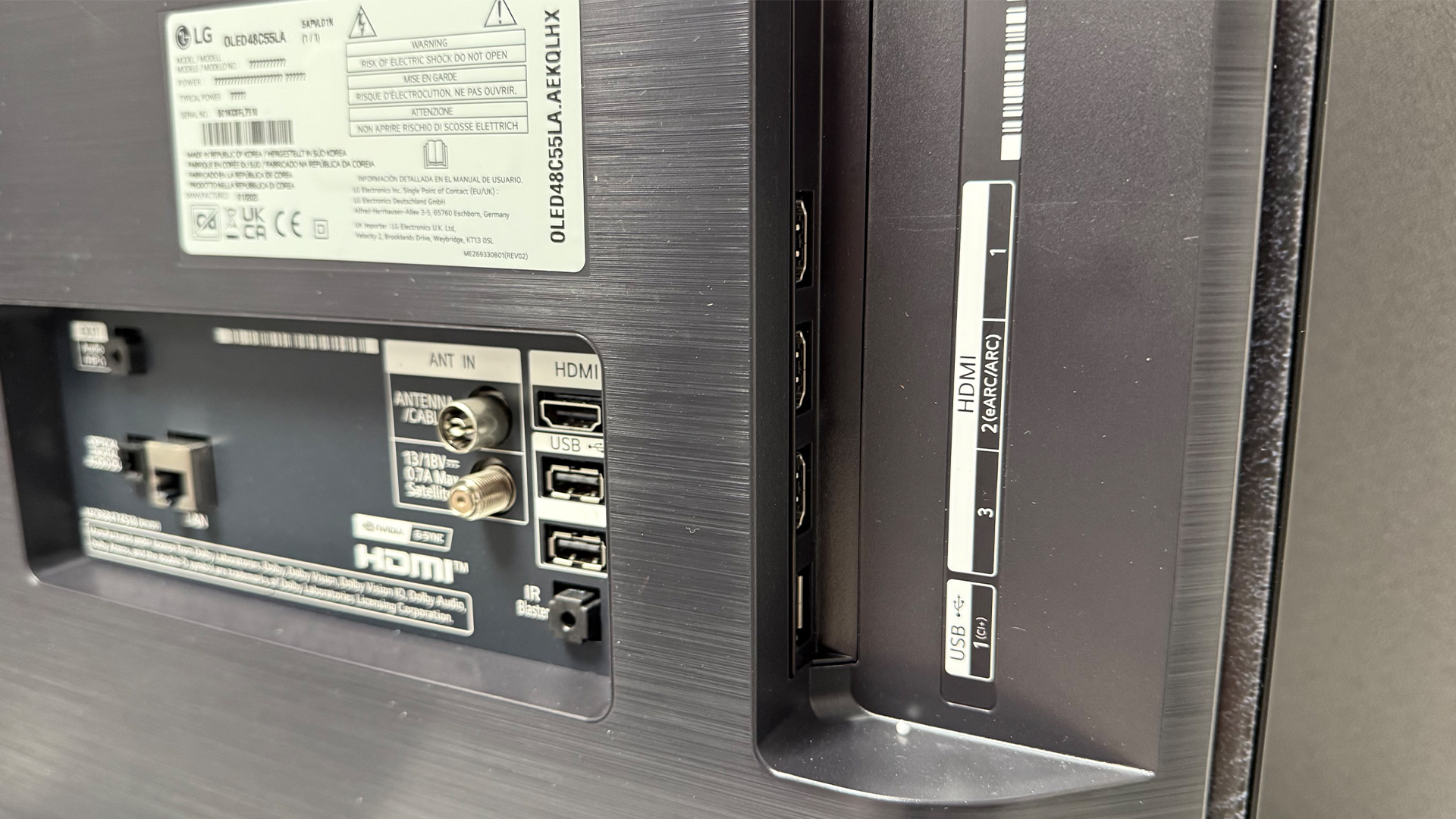
The 48-inch LG C5 is packed to the brim with features, which is particularly impressive considering its small size. But, as with its design, not a great deal has changed since last year.
Starting with the two big elephants in the room: the panel tech remains unchanged and, despite years of asking, there’s still no heatsink.
The panel used remains a WOLED, with the older brightness-boosting Micro Lens Array (MLA) tech seen on last year’s G4 sadly being retired, rather than trickling down to the C-series, as we’d hoped it would this year.
The lack of MLA is a shame, as it does offer palpable brightness improvements based on our testing. But it’s also not surprising, as it has been superseded by the Primary RGB Tandem OLED panel tech that LG Display debuted on the LG G5 at CES in January. MLA is sadly going to the same farm as curved screens and 3D TVs.
Equally, a heatsink could have helped the TV go brighter for longer without risking damage. The omission is particularly noticeable on this size of the C5 which, despite having the same Brightness Booster Engine as the larger models, can't hit the same peak brightness levels.
This isn’t a phenomenon specific to the C5, though. It’s an issue on all smaller OLEDs, due to a combination of factors including pixel aperture and the impact it has on heat management. Pushing the panel too hard can also impact colour accuracy, which is why companies tend to tune smaller sets more conservatively than larger models.
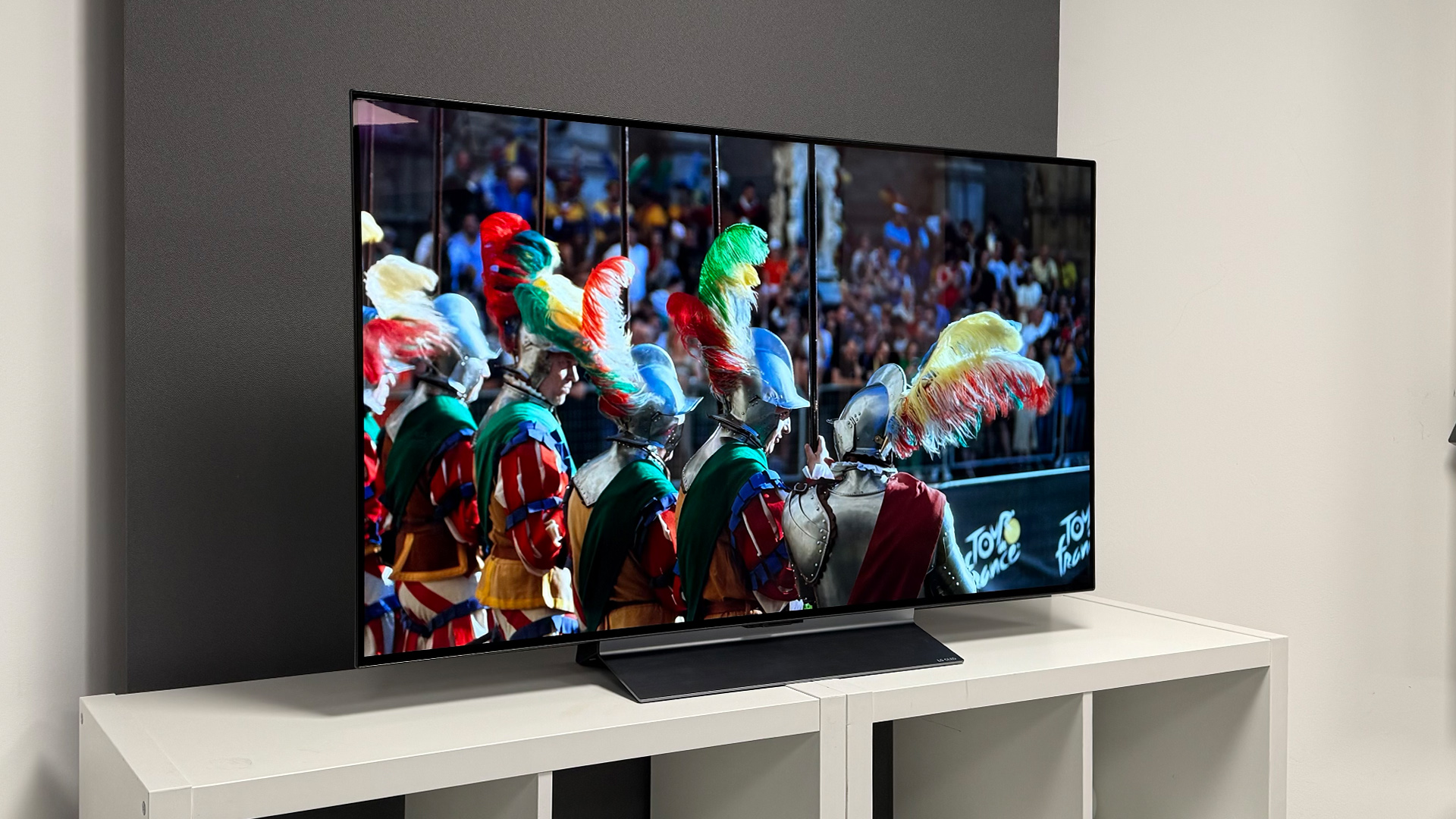
The only big change for the C5 is the use of a newer LG Alpha 9 Gen 8 processor. Like every chipset we’ve seen recently, the Alpha 9 Gen 8 has an overt focus on AI, which LG claims it has leveraged to help the TV deliver more advanced upscaling and holistically improve colour accuracy, audio quality and HDR tone mapping.
Outside of the dedicated AI picture and sound profiles, which can be accessed in the C5’s settings, the only obvious front-facing AI feature it brings is a new chatbot system designed to help you troubleshoot and generally use the set. Through vocal commands, you can do things such as tweak picture settings and ask what a particular toggle does.
The C5 supports the most common HDR standards of HDR10, Dolby Vision and HLG. The only ongoing omission is Samsung’s home-brewed, open-source HDR10+, which is a rival to Dolby Vision and offers similar frame-by-frame dynamic range optimisation powers for compatible content.
Thankfully, the lack of big feature changes is largely forgivable, as the LG C-series was already one of the most feature-packed you could find.
The main highlight remains the inclusion of four, as opposed to the more standard two, full-speed HDMI 2.1 inputs, one of which doubles as an eARC port.
While two HDMIs will be fine for most people, dedicated gamers with multiple latest-gen consoles and a sound system (which will use the eARC port) will really benefit from the C5's four.
Those four HDMI 2.1 sockets all support 4K/144Hz (as well as the more common 4K/120Hz), plus VRR and ALLM. Dolby Vision gaming is also on board and a welcome inclusion for Xbox Series X/S owners.
So all-in-all, if you connect a current generation games console or PC, the unit will run smoothly and as fast as the machine allows – it won’t be the C5 causing the bottleneck.
LG’s webOS 25 software runs the show and is fairly similar to the version we saw on the older C4. The only big addition outside of the AI assistant is a new Xbox app, which lets you stream games directly from the TV and adds the ability to pair a Bluetooth controller directly to the C5. This used to be exclusive to Samsung TVs.
Otherwise, the OS retains its strong app support, with key services including Netflix, Disney Plus, Apple TV+, Amazon Prime Video, BBC iPlayer and ITVX all being supported and running correctly during our checks.
Picture
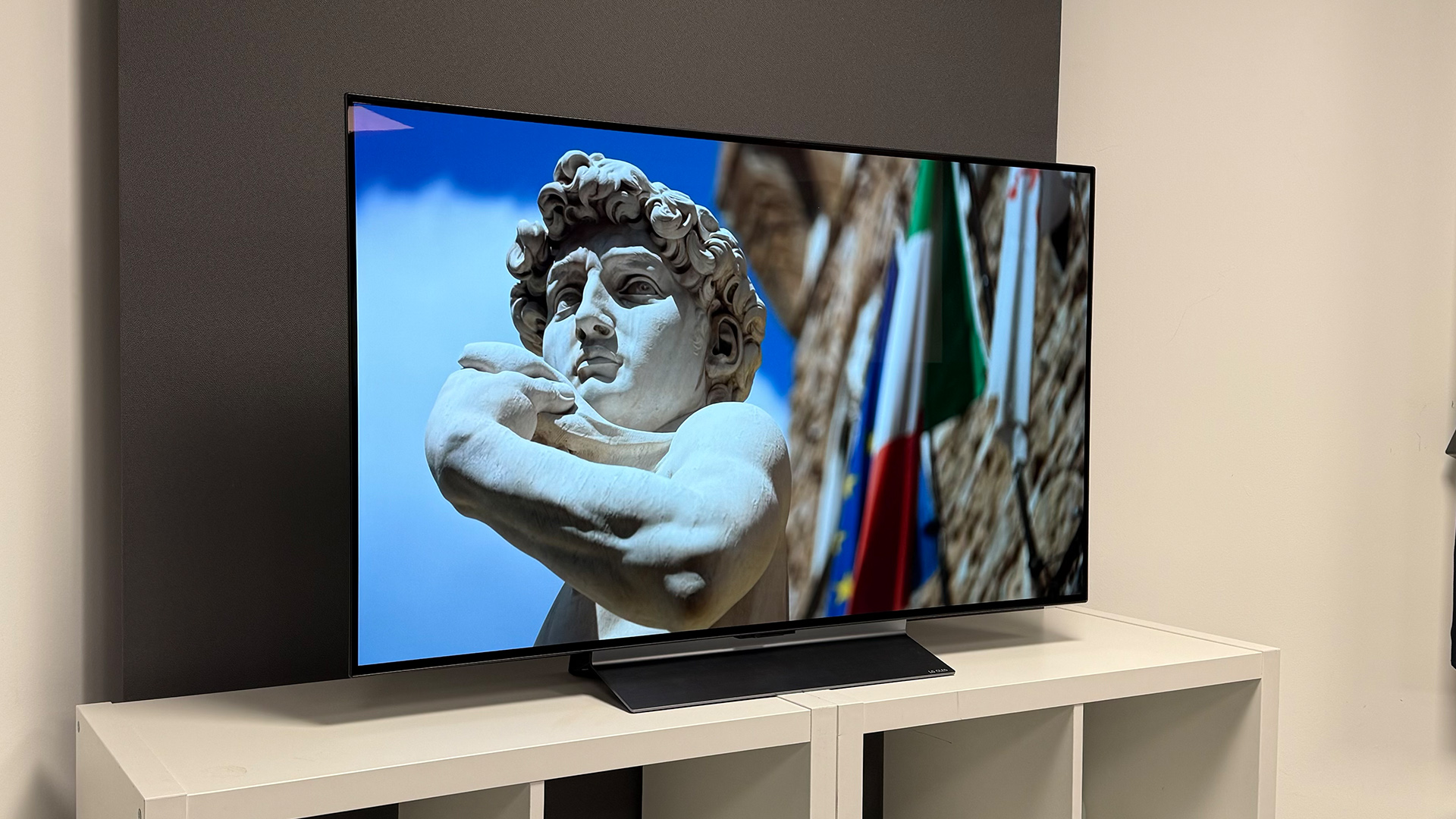
Powering up the 48-inch LG C5 paired with our trusty Oppo UDP-203 4K Blu-ray player, the set immediately has a different character to both its 55-inch sibling and its key rivals. Watching Dune: Part 2 with the TV’s out of the box standard settings, as often happens, the set tries too hard.
Peak bright areas in the desert stand out too much as the C5 tries to show quite how bright it can go, while colours look a touch too warm. Motion handling is also very heavy-handed, with the fighters looking like dancing ballerinas, rather than aggressive knife-wielding warriors.
Thankfully, things rapidly improve as we fiddle with the settings, eventually settling on Filmmaker Mode, with the lowest Cinematic Movement option on, sharpening and judder reduction off and dynamic tone mapping on. Colour temperature, which is now tweaked using a slider control, rather than the less granular options of before, is left at its default for Filmmaker Mode.
Set up accordingly, the desert retains its sparkle, with the brightest part of the sky shining in a way OLEDs this price from even a few years ago can’t, but with significantly more detail.
Bright shading is strong, too, with a wonderful hue of blue transitioning to orange across the image.
Cloud clusters equally retain their shape, despite the added brightness, showing the difference pixel-level light control can make. Our only minor quibble is that colour temperature still looks a smidgeon too cool, but rapidly shifts the other way when we make minor adjustments.
Motion handling has also now regained its composure, with the actions of the on-screen characters taking on their intended weight, and a difficult scene in which a Fremen fighter launches a missile at an Ornithopter looks accurate, with no ghost frames or awkwardness seeping in.
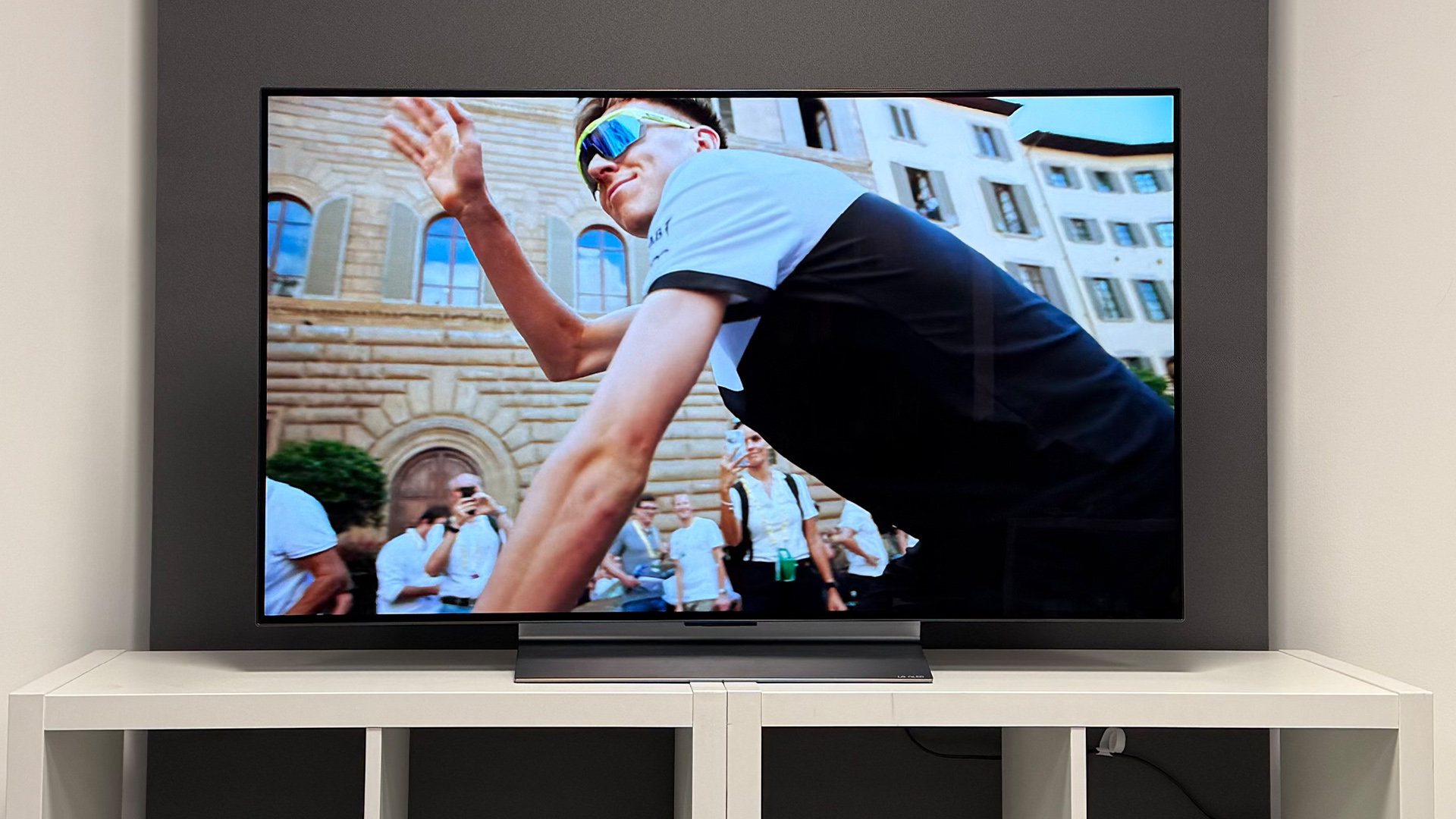
We move on to one of our new favourite 4K Blu-ray test discs, Civil War. During the heated nighttime battle scene, the explosions look dynamic and truly pop out of the dark sections with zero bloom – as we’d expect from an OLED – but we see colour volume drop slightly, especially in characters’ skin tones.
This is particularly noticeable on close-up shots. While the brightest parts of faces pop and look wonderfully three-dimensional, the darker parts take on a greenish hue, losing all warmth, resulting in a flatter, less natural image than we like.
This is slightly annoying as the set otherwise handles dark scenes admirably. Switching to our Alien: Romulus test disc, the opening scene shows a giant spacecraft slowly creeping out of the pitch black vacuum of space. The image is full of detail with every nook and cranny of the vessel on display, giving us a wonderfully three-dimensional spectacle.
Playing Top Gun: Maverick, the skyline once again looks excellent, full of pop and detail, but an area of the aircraft carrier in the shadows looks slightly flat, losing some definition in areas that look wonderfully sharp on the Samsung S90F we’re testing it against (full review coming soon).
Yet, when we switch to Oppenheimer, the issue doesn’t repeat during a shadow-heavy scene where he is meeting politicians. The skin tones look natural, and the entire picture has a sharp, wonderfully three-dimensional quality, with every stitch of their suits visible.
Moving to our final, incredibly difficult, SDR True Grit upscaling test, the C5 performs well.
During the tricky opening, the dark lights in the night-time farm hold a nicely bright, distinctive spot, with the glow illuminating details well without introducing noise or oversharpening the falling, fluffy snow.
The intentional spaghetti western grain is retained as we move to a brighter scene, with the set not pushing too hard and oversharpening or flattening the very difficult picture.
Ultimately, while the 48-inch LG C5 displays a couple of niggling picture issues, it's superbly competent overall. And many users won't notice those issues at all.
Sound
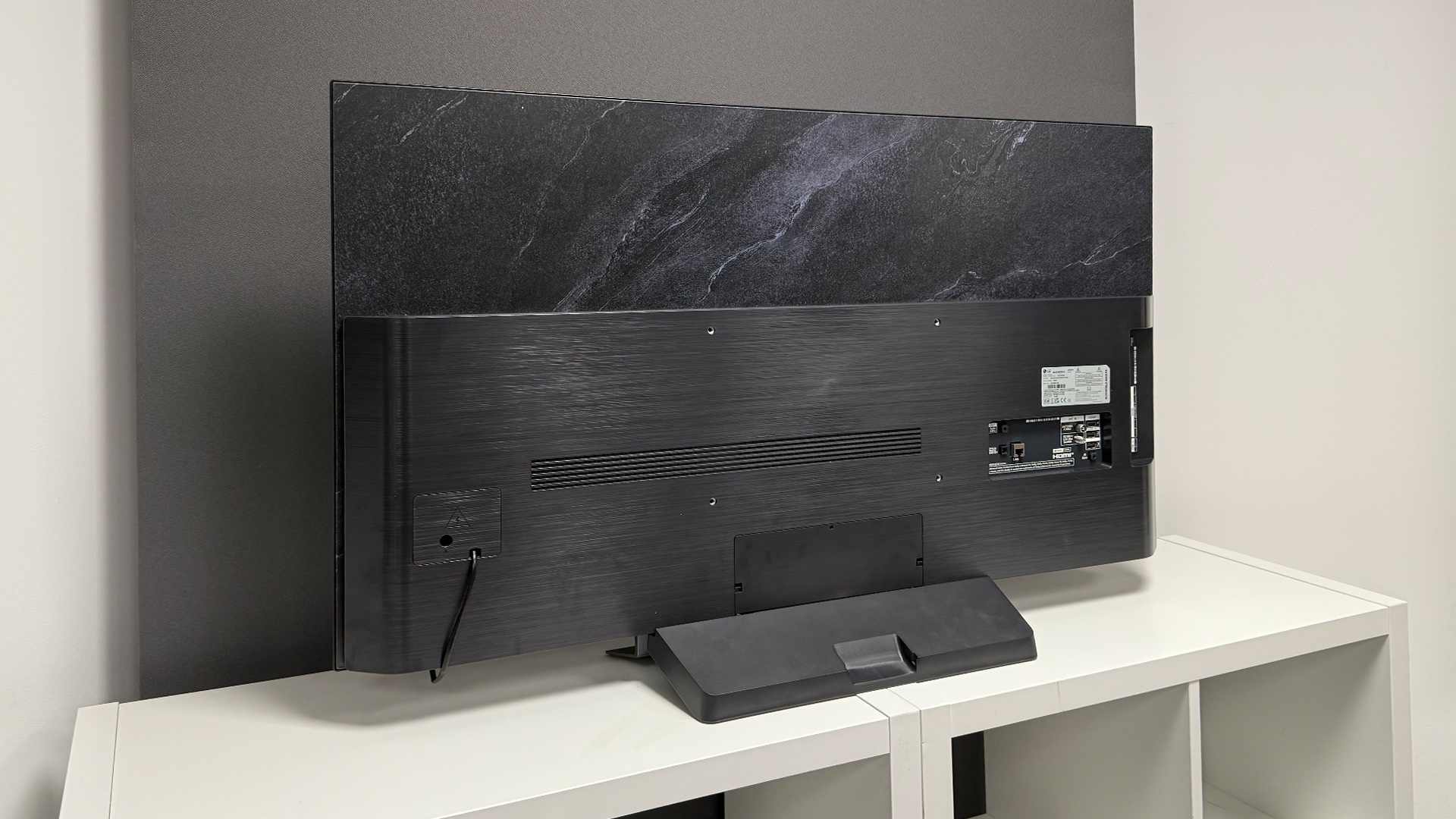
The 48-inch C5 features the same 2.2-channel 40W speaker system as the outgoing C4.
On a set this size, audio quality is usually one of the main compromises you have to put up with. This is because their smaller dimensions impact how much air the speakers can move around. Based on our testing, this remains the case with the 48-inch C5.
Starting with the set in its standard audio mode, the C5’s performance is distinctly flat, with every part of the sound coming from the centre of the screen. Gunfire and soldiers’ shouts during Civil War lack their intended directional quality.
On top of this, while gunfire never sounds acidic as it does on the S90F, it lacks the bite you’d expect, and explosions in the distance show the C5’s low end doesn’t quite have the heft required to deliver the intended, bone-rumbling effect.
Sadly, this isn’t fixed when we switch to the AI audio mode. LG is making a lot of noise about the C5’s new AI audio powers, with its custom AI Sound mode that aims to “optimise the audio” to its users’ specific tastes. The set-up requires you to click through a process, picking options that “describe your preferences” before optimising the speakers to them.
Here, while the set noticeably tries to separate the frequency range more, it makes each part thin in the process. Gunfire takes on a nasal, fizzy quality, and sibilance creeps into dialogue while the low end all but disappears.
We get the best results switching to the set’s Cinema mode. But even then, the audio lacks definition.
Moving to an intense scene in Top Gun: Maverick, the audio remains flat. The boom of jet engines lacks precision and directionality, and voices aren’t suitably separated from background noise, making some conversations hard to follow.
This makes a soundbar or other speaker system an essential purchase for any serious movie fan planning to pick up the LG C5.
Verdict
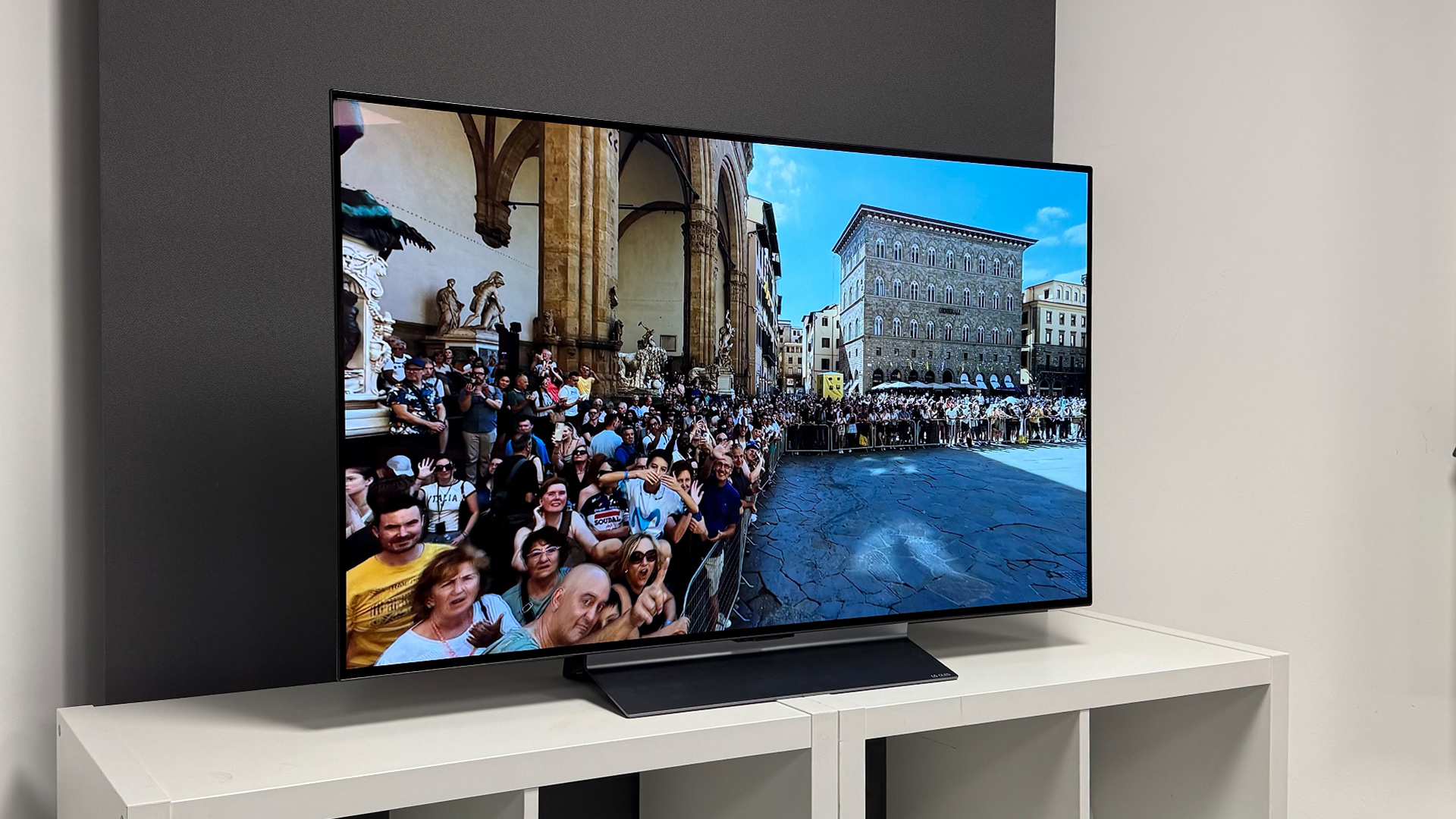
The 48-inch LG C5 retains the Korean giant's legacy as one of the top small-ish OLED TV makers, but largely because it sticks very closely to the blueprint that made past C-series sets great, rather than any clever innovation.
If you’re yet to take the OLED plunge, then this is a solid option, especially if you’re short on space or cash-rich enough to justify one as a secondary, bedroom set.
But the lack of progress is beginning to show at this size, and it means that the 48-inch LG C5 isn’t the slam-dunk, no-brainer purchase it used to be – especially with Samsung and Panasonic nipping at its heels.
SCORES
- Picture 5
- Features 5
- Sound 2
MORE:
Read our review of the 48-inch LG C4
Also consider the 48-inch Samsung S90F
Read our LG 65QNED93 review
Best TVs: flagship OLEDs and budget LED sets tried and tested

Alastair is What Hi-Fi?’s editor in chief. He has well over a decade’s experience as a journalist working in both B2C and B2B press. During this time he’s covered everything from the launch of the first Amazon Echo to government cyber security policy. Prior to joining What Hi-Fi? he served as Trusted Reviews’ editor-in-chief. Outside of tech, he has a Masters from King’s College London in Ethics and the Philosophy of Religion, is an enthusiastic, but untalented, guitar player and runs a webcomic in his spare time.
- Lewis EmpsonSenior Staff Writer
- Tom Parsons
You must confirm your public display name before commenting
Please logout and then login again, you will then be prompted to enter your display name.
